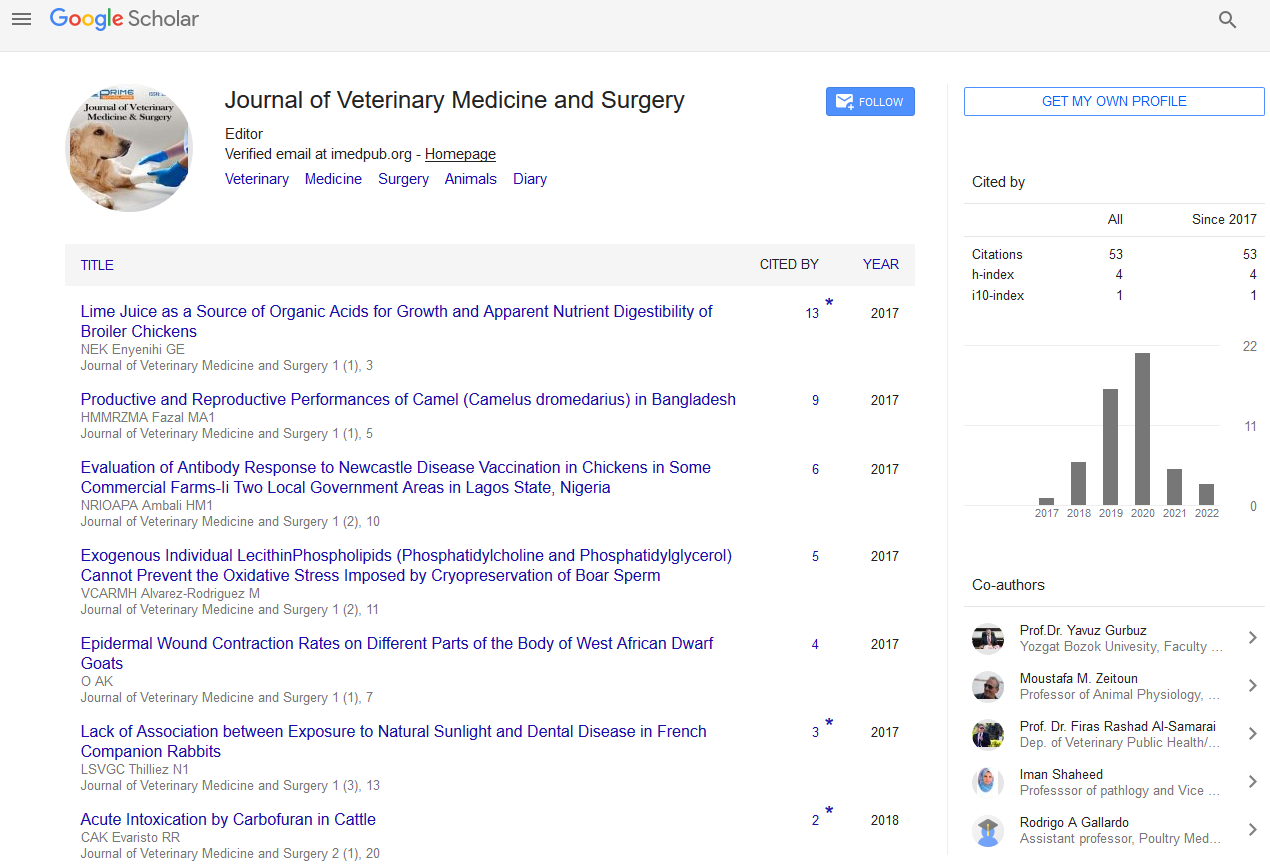Commentry - (2024) Volume 8, Issue 3
Veterinary Microbiology: Understanding the Microorganisms That Affect Animal Health
Alexander Thomas*
Department of Infectious Diseases and Medicine, Wuhan University, China
*Correspondence:
Alexander Thomas,
Department of Infectious Diseases and Medicine, Wuhan University,
China,
Email:
Received: 02-Sep-2024, Manuscript No. IPJVMS-24-21927;
Editor assigned: 04-Sep-2024, Pre QC No. IPJVMS-24-21927 (PQ);
Reviewed: 18-Sep-2024, QC No. IPJVMS-24-21927;
Revised: 23-Sep-2024, Manuscript No. IPJVMS-24-21927 (R);
Published:
30-Sep-2024, DOI: 10.36648/2574-2868.8.3.26
Description
Microorganisms are present in nearly every environment,
including the bodies of animals. While many microorganisms
are harmless or even beneficial (such as the bacteria that aid
in digestion), others can cause infections that lead to illness,
discomfort, and even death. Veterinary microbiology helps to
identify harmful pathogens, determine their role in disease
processes, and guide appropriate treatment and prevention
strategies. In addition to providing insights into infections
and disease mechanisms, veterinary microbiology also plays
a vital role in safeguarding the food supply. Many infectious
diseases in animals particularly in livestock can be transmitted
to humans through consumption of contaminated animal
products. Therefore, understanding the microbiology of animal
pathogens is key to maintaining food safety and preventing
zoonotic diseases (diseases that can be transmitted between
animals and humans). Accurate diagnosis is crucial in veterinary
microbiology, and there are various techniques used to identify
microbial pathogens in animals. Some of the most common
diagnostic methods include culture and sensitivity testing
growing microorganisms from samples (such as blood, feces,
or tissue) on agar plates to identify the specific pathogen and
determine its antibiotic sensitivity. This is particularly useful
for bacterial infections. Polymerase Chain Reaction (PCR) a
molecular technique used to amplify small amounts of genetic
material from a pathogen, making it easier to detect. PCR is
highly sensitive and can be used to identify viruses, bacteria,
fungi, and parasites in a variety of samples. Serology tests that
detect antibodies or antigens in the blood, helping to identify
past or current infections. Microscopy direct examination of
samples (e.g., feces or skin scrapings) under a microscope to
identify parasites, fungal elements, or bacterial organisms.
Once a pathogen is identified, veterinarians can prescribe
appropriate treatments, which may include antibiotics,
antivirals, antifungals, or antiparasitics, depending on the type
of infection. Vaccines also play a crucial role in preventing viral
and bacterial infections in animals, particularly in high-risk
populations such as puppies, kittens, and livestock.
Additionally, good biosecurity practices are essential for
preventing the spread of infectious diseases. This includes
practices like proper sanitation, isolation of sick animals,
quarantine protocols, and controlling animal movement.
Veterinary microbiology is an essential branch of veterinary
science that provides the knowledge needed to diagnose, treat,
and prevent infectious diseases in animals. By understanding
the role of microorganisms—whether bacteria, viruses, fungi,
or parasites veterinarians can help protect animals from a
wide range of potentially harmful infections, reduce the risk of
zoonotic diseases, and ensure the safety of the food supply. As
science continues to advance, new diagnostic tools, vaccines,
and treatments will help improve the health of animals,
contribute to public health, and enhance the overall quality
of veterinary care. Helminths (worms) such as roundworms,
hookworms, and tapeworms are common gastrointestinal
parasites in both companion animals and livestock. These
parasites can cause symptoms like diarrhea, weight loss, and
anemia. Ticks are vectors for a variety of diseases, including
Lyme disease, caused by Borrelia burgdorferi, which can affect
dogs and other animals. Tick-borne diseases can cause joint
pain, fever, and fatigue, and may require long-term treatment.
Parasitology is the study of parasites organisms that live on or
inside another organism (the host) and derive their nutrients at
the host’s expense.
Acknowledgement
None.
Conflict Of Interest
None.
Citation: Thomas A (2024) Veterinary Microbiology: Understanding the Microorganisms that Affect Animal Health. J Veterinary Med. 8:26.
Copyright: © 2024 Thomas A. This is an open-access article distributed under the terms of the Creative Commons Attribution License, which permits unrestricted use, distribution and reproduction in any medium, provided the original author and source are credited.

